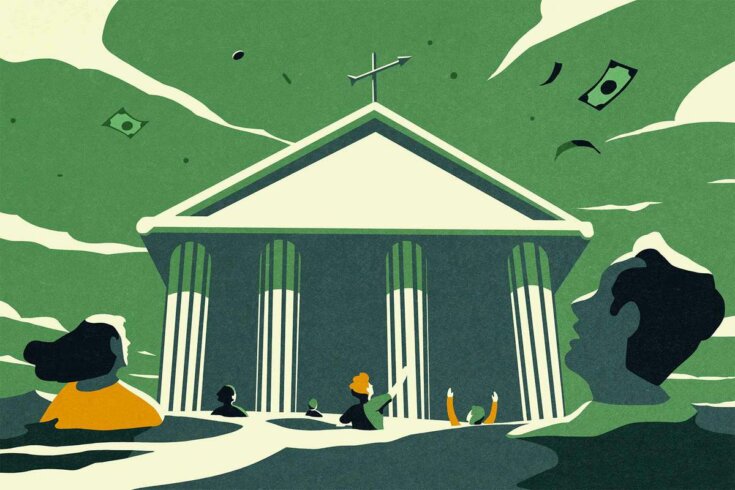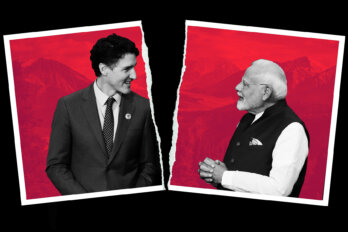In 1991, the Bank of Canada adopted its defining policy goal: to keep inflation under control and hold it to 2 percent. Then finance minister Michael Wilson outlined the policy’s broader objectives in his federal budget speech that year. Stable prices, Wilson said, would not only help Canada compete but would also “protect those least able to protect themselves, such as the working poor, the elderly, and others on fixed incomes” and make “home ownership more affordable for Canadians.” Above all, Wilson said, the move would help restore predictability to the economy. For the most part and for a long time, this is essentially what happened.
But the global COVID-19 pandemic and a war in Europe changed things.
In an April 2021 press release, the Bank of Canada noted that Canada’s economic rebound from the pandemic would be good, given the monetary policy support continuing amid the struggles of the third wave of lockdowns. While economic recovery remained, according to the bank, “highly dependent on the evolution of the pandemic and the pace of vaccinations,” it projected real GDP growth in Canada would be 6.5 percent that year—which is to say, very strong. Alongside that increase in overall economic activity, the bank predicted, as the GDP returned to normal, inflation would rise “temporarily” but it would return to 2 percent in the second half of 2022.
That’s not what happened. By June 2022, inflation was up to 8.1 percent. After raising the interest rate by half a percent that month, the bank raised it again, in July, this time by a full percentage point, to 2.5 percent. Meanwhile, inflation lingered in the range of about 6 to more than 7 percent for many months, through the end of 2022, and finally started to drop only in early 2023. But this past June, the bank raised the interest rate once more, to 4.75 percent. Inflation has gradually dropped—to 3.3 percent in July, about the same it had been in April 2021. It’s been a ride.
Another interest rate update looms in September. The bank has little choice but to keep going according to its plan: either continue raising rates or at least hold them until it reaches its 2 percent inflation goal, should that ever happen. Meanwhile, the political and social landscape has shifted. Under populist attack, facing a skeptical public, and without fiscal policy help, the bank, whatever credibility it might have had, is now facing intense scrutiny. The bank is now at a crossroads. Canadians’ faith in it has for decades rested on its mandate. But now that mandate looks to be at odds with the realities of the economy—and people’s lives. What will it do?
“Adopting the inflation target of 2 percent made it crystal clear the central priority the bank places on inflation,” says Henry Siu, professor of economics at the University of British Columbia and a faculty research fellow at the National Bureau of Economic Research, an American nonprofit. Double-digit inflation plagued the Canadian economy throughout the 1970s and ’80s, causing consumer prices to soar. At one point, in 1981, the consumer price index hit 12.5 percent. The bank adopted the 2 percent inflation target under the assumption that, at 2 percent, demand for goods and services is roughly equal to what the economy supplies. Its key interest rate is the policy lever the bank pulls to hit that target. If the economy is too slow, it may lower the key rate to spur borrowing and spending. But if demand outstrips supply, the bank may raise it to discourage spending and borrowing and to promote saving, thus cooling the economy. “The adoption of [the 2 percent inflation target] policy . . . made it possible for everyone to judge the success of the bank in achieving its objective,” Siu said. “That’s what gave the bank its credibility.”
But credibility is something Canada’s institutions, including the federal government and public agencies, are now struggling to retain in the wake of the pandemic, which they didn’t appear prepared to address. The health system struggled to stay on top of testing. Mask mandates were confusing in some areas. Contact tracing was a mess. Vaccine bookings were like something out of The Hunger Games. We seem to have got through the worst of the pandemic, but it left many people in various states of anger. Even the major successes of the pandemic, like the emergency federal financial aid programs, were subjected to myriad criticisms, including from Conservative finance critic turned leader Pierre Poilievre, who complained at first that they weren’t working, then that they were wasteful, and then, more recently, that they contributed to inflation. On this, Poilievre took direct aim at the bank itself, saying that it “forgot [its] job was to fight inflation,” not “to print money for politicians to spend”—not exactly an accurate description of the bank’s mandate. He also vowed that, as prime minister, he would fire its current governor, Tiff Macklem, drawing the bank into a realm that it has successfully avoided entering for decades: Canada’s political debate.
As silly as Poilievre’s rhetoric may be (Siu calls it “a bit wacky”), the bank is hardly blameless in what’s occurred. Sure, it could not have predicted Russia’s invasion of Ukraine, nor the knock-on effects it had on the global economy. It didn’t know when the pandemic would end. But the bank is supposed to anticipate human behaviour (at least of the economic kind)—it can’t create predictable policy otherwise.
Institutional memory might be one reason why it failed to act on what was coming, says Mike Moffatt, assistant professor of business, economics, and public policy at Ivey Business School in London, Ontario, and the senior director of policy and innovation at Smart Prosperity Institute in Ottawa. “Central banks, like every other organization, have a tendency to fight the last war”—in this case, the recession that followed the stock market crash of 2008/09. “The lesson the central banks drew there was: ‘Okay, well, you don’t really have to worry as much about inflation and, y’know, inflation is a phenomenon from the ’70s and ’80s, and it’s essentially dead. And it takes a lot to push up the economy, so you can be really aggressive and not necessarily have to worry about inflation,’” Moffatt says. “And . . . that wasn’t exactly true.” Even more simply, the bank may have failed to anticipate what happens when you throw open the doors for populations who’ve been told to go nowhere and do nothing for two years. It turns out they go everywhere and do everything. And they spend money, contributing to inflation.
The bank was not alone in this miscalculation. After the initial relatively widespread public acceptance of lockdowns, governments around the world failed to fully understand the consequences of people coming out of them: as restrictions lifted, people went out and did all the things they couldn’t do before, like shopping, travelling, and eating out. The conflicting desire to do what was right for the public but to also let people do what they wanted vexed Canadian policy makers, all but inhibiting their ability to communicate properly. Instead, they stuck to a mantra, saying repeatedly that everything would or could return to normal, even in the face of evidence that suggested that aspects of our society may have changed fundamentally. Is the bank at risk of making the same mistake now?
Sustained interest rate hikes may be an inflation reduction plan from a bygone era, Armine Yalnizyan, former senior economic policy adviser to the federal government and now the Atkinson Fellow on the Future of Workers, suggests. She points to a few indicators. Normally, for instance, under a policy of interest rate hikes, we might expect more unemployment, but despite a net job loss in May and July, Canada’s unemployment rate has stayed low. Experts and bankers also predicted a recession, but economic growth continues. So, while inflation has come down, says Yalnizyan, the bank’s approach might not be entirely why. The world has changed a lot since 1991. And these days, reaching a 2 percent goal may prove ultimately impossible.
For one thing, there are few guarantees that prices, now that they’re up, will come down. In June, RBC economists noted that while food prices may not continue to rise at the same rapid pace as they have over the past two years, multiple factors—including supply chain issues like transport costs and climate change—will likely mean they will keep going up. “We don’t expect food prices to return to pre-pandemic levels,” RBC’s economists wrote. The same may be true for energy prices. In June, OPEC+ member nations agreed to decrease production through 2024. “Gas is not going to become cheaper,” one analyst told the Associated Press, adding it’s likely to “become marginally more expensive.”
Then, says Yalnizyan, there’s “seller’s inflation,” where corporations pass on higher costs to consumers instead of reducing profit margins. In June, Christine Lagarde, head of the European Central Bank, said corporate profits accounted for roughly two-thirds of inflation in 2022 in the Eurozone—and noted that inflation will continue unless that changes. In March this year, Canadian parliamentarians questioned the heads of the country’s biggest grocery chains on rising food prices. Galen Weston, head of Loblaw Cos., dismissed the idea that grocers were causing food inflation, saying it was “not only false, it’s impossible.” Few appear to be convinced. An Abacus Data poll in July found that a combined 61 percent of respondents said that companies charging higher prices to make bigger profits has had a lot of impact on inflation. This summer, the government issued its “grocery rebate” to Canadians—a gesture of goodwill, certainly, but not a long-term policy response. If inflation still struggles to hit the 2 percent target, Canadians may look increasingly to the government for more structural relief. It’s doubtful that they will get much.
In July, Canada’s top-line CPI rose again. And while the three-month moving average of core inflation measures most closely monitored by the bank fell, according to Bloomberg, it still sits beyond the bank’s comfort zone and well above the 2 percent target.
The Bank of Canada now stands somewhat alone. Some economists are bullish on rate hikes, though they’re divided on whether more will come. Indeed, in May, Macklem said that “the path from 3 percent to 2 percent is both slower and more uncertain.” But: can’t stop, won’t stop. Meanwhile, the public discourse sours further. In July, Poilievre described the bank’s latest raise as an “uppercut to Canadian families who are drowning in debt.” Even NDP leader Jagmeet Singh has begun, more gently, to question the bank, saying in June that rate hikes “hit families who are already stretched thin.” A recent Angus Reid poll showed that the number of Canadians who support rate decreases has increased dramatically over the past year. But the bank has little choice, given its mandate, but to keep going, likely incurring more public disillusionment at its role and policy.
Two percent is the goal. The plan to get there might be working. But sticking to the plan will hurt the bank, at least in the eyes of Canadians. With some help from opportunistic politicians, their faith in the bank as an institution that understands the realities of the economy may have been irreparably shaken.





